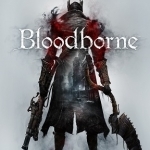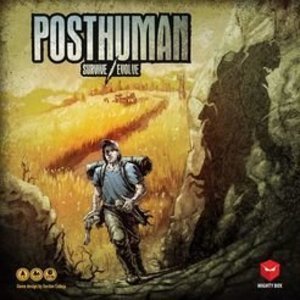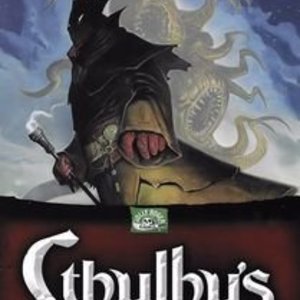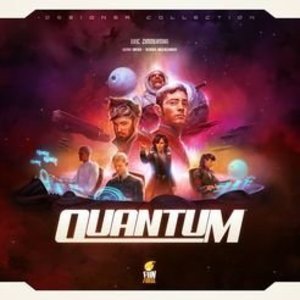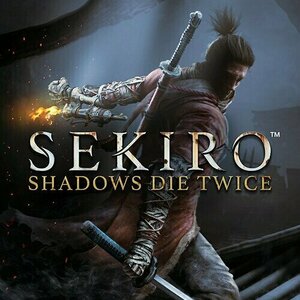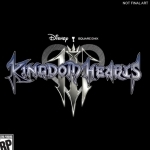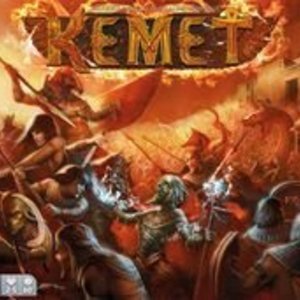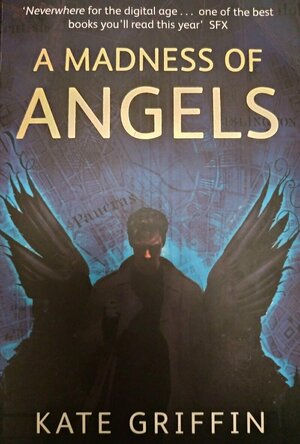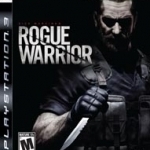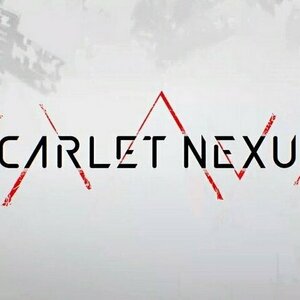Search
Search results
Connor Sheffield (293 KP) rated Bloodborne in Video Games
Aug 13, 2018
Incredible atmosphere (5 more)
Great variety of enemies
Beautiful art and imagery
Interesting Lore (optional)
Plenty of different ways to play
Great combat mechanics
Can be difficult (1 more)
Not as easy and some people make it look
Challenging and Satisfying
Contains spoilers, click to show
Bloodborne is part of the famous series of games such as Demon Souls and Dark Souls, which if you know those previous games, you'll know that they are infamous for their difficulty, even spawning an entire meme phrase that simply says "git gud".
Bloodborne however, stands aside from the souls series because it's combat mechanics are faster and each enemy requires the player to evolve their skills and tactics in order to progress. The first major difference in Bloodborne that might throw previous souls players off, is the fact that there is no shield. Instead the Hunter wields a right handed melee weapon and in the left hand they wild a ranged weapon in place of a shield. This ranged weapon at first is primarily used not for damage, but for parry's/counter attacks.
The lack of shield helps the player evolve their combat from hiding behind a shield like in the souls games, to being more aggressive in a fight but also tactical because during your first run through of the game, you'll simply be dealing with each enemy through trial and error until you learn their attacks and learn how to defeat them. This is something that has been in every souls game and that is why these games are so rewarding.
The reason Bloodborne is my favourite is because of this speed that makes you evolve in combat. I ran into this game thinking it was like other RPG games where I could pretty much take on any beginning level enemy and even if they packed a punch I'd take out the enemy with a thin line of health left, only to use a few health potions and repeat. But Bloodborne? Good God you can't rush this game!
Every enemy has their own attack system that varies. Some Yarnhamites are more vicious that other, and some are more defensive and cautious. There are also enemies that are deceptive. If you were to come across a large, fat troll in a fantasy world, you'd expect them to be rather slow, especially when swinging a weapon. You'd only expect the force and weight of the weapon to give speed to a swing. But the large troll creatures in Bloodborne are deceptively fast and even if you keep some distance between you, they can leap really quickly and instantly pummel you with a cinder block.
But I'm not going to reveal too much about enemies because it's easier and more fun to test out the game for yourself.
Boss fights are the main factor for the infamous difficulty of the souls series and Bloodborne is no stranger to this element either. There are Two bosses in the beginning of the game. One is optional but I would highly recommend facing it. The other boss is your first taste (if you didn't kill the optional boss first) of the challenges you'll face. Both bosses help prepare for later boss fights because of their different combat styles.
The first (optional) boss is the Cleric Beast on the bridge in the beginning level, and it is intimidating as fuck for a beginner of the souls series. If you haven't watched or played a souls game before and you go into Bloodborne (or any of them) with no knowledge of the scale of bosses, then they are intimidating in comparison to your measly character size. However once you learn this boss, and face later bosses, you'll realize that this boss is one of the easiest to face.
The next boss and the main boss of the beginning level, who is not optional as defeating him let's you progress through the story, is Father Gascoigne, another Hunter in the world of Bloodborne and the first of many you'll come across but facing this hunter is by far one of the most painstakingly challenging beginning fights to a game I've ever had to face. In my first run through I died to him so so soooo many times and sometimes it was simply cos he was on low health and I got cocky and fucked up. However defeating this boss, and any boss in this game, really feels like an achievement.
I've realised iv made this review hella long but that's because Bloodborne cannot be easily reviewed in just a few words but I'll do my best to do a quick overall conclusion as to why this is my favourite game:
The level design isn't flawless but it is incredible and the atmosphere created through sound design and soundtrack make this game incredibly in depth and really creepy which I love because even after a few play through I still get creeped out and even jump at some of the jumpscares that I forget about!
The weapons of this game are all well designed aesthetically and though I know certain ones I never use, they are all useable depending on player preference and style of play. There's so much to choose from and learn and every item in this game has a description that teaches the player more about the Lore of the world but that is of course optional and isn't required necessarily to understand the games main quest plot.
This game also requires exploration because the path the player needs to take isn't set out for them which makes the game less linear meaning that you can play this game differently every time you play it. It also might mean that you'll need to look up the paths you need to take online or in a guide in order to just get through the game and complete it. Otherwise it could take you hours, maybe days to figure out where you need to go.
The combat mechanics of Bloodborne are some of the best I've ever seen and played with and that's why it stands out to me above the other souls games.
The boss fights are intense and each new boss helps the player to adapt and evolve their combat skills and tactics in order to overcome the enemy.
The world is very heavily Lovecraftian and therefore the Lore is incredible but also optional. Also, there are easier ways to fight this games enemies including bosses, so if you're struggling, then Google it and there will be hundreds of players in the same boat as you, and in my opinion there's no wrong way to play games like this. If it remains fun and let's me complete the storyline, such as summoning AI for boss battles in offline mode. Then play however you want to because it's you playing the game, not some internet troll who says you're shit and/or cheating the game. If it's possible to do in game, it's part of the game...deal with it!
There are faults such as minor framerate glitches, and glitches with the ragdoll bodies of defeated enemies falling through the environment. There are also some elements that are part of the game such as windows for visceral attacks and hitboxes which sometimes feel like bullshit, but this also helps you evolve so....pros and cons.
My final comment is this;
The best way to learn about this game and enjoy it, is to play it for yourself. It's hard to put into words (even this amount of words in this review) just how incredible this game looks and feels. So if you have a Playstation 4 then grab yourself a copy of Bloodborne and enjoy!
Fear the Old blood!
Bloodborne however, stands aside from the souls series because it's combat mechanics are faster and each enemy requires the player to evolve their skills and tactics in order to progress. The first major difference in Bloodborne that might throw previous souls players off, is the fact that there is no shield. Instead the Hunter wields a right handed melee weapon and in the left hand they wild a ranged weapon in place of a shield. This ranged weapon at first is primarily used not for damage, but for parry's/counter attacks.
The lack of shield helps the player evolve their combat from hiding behind a shield like in the souls games, to being more aggressive in a fight but also tactical because during your first run through of the game, you'll simply be dealing with each enemy through trial and error until you learn their attacks and learn how to defeat them. This is something that has been in every souls game and that is why these games are so rewarding.
The reason Bloodborne is my favourite is because of this speed that makes you evolve in combat. I ran into this game thinking it was like other RPG games where I could pretty much take on any beginning level enemy and even if they packed a punch I'd take out the enemy with a thin line of health left, only to use a few health potions and repeat. But Bloodborne? Good God you can't rush this game!
Every enemy has their own attack system that varies. Some Yarnhamites are more vicious that other, and some are more defensive and cautious. There are also enemies that are deceptive. If you were to come across a large, fat troll in a fantasy world, you'd expect them to be rather slow, especially when swinging a weapon. You'd only expect the force and weight of the weapon to give speed to a swing. But the large troll creatures in Bloodborne are deceptively fast and even if you keep some distance between you, they can leap really quickly and instantly pummel you with a cinder block.
But I'm not going to reveal too much about enemies because it's easier and more fun to test out the game for yourself.
Boss fights are the main factor for the infamous difficulty of the souls series and Bloodborne is no stranger to this element either. There are Two bosses in the beginning of the game. One is optional but I would highly recommend facing it. The other boss is your first taste (if you didn't kill the optional boss first) of the challenges you'll face. Both bosses help prepare for later boss fights because of their different combat styles.
The first (optional) boss is the Cleric Beast on the bridge in the beginning level, and it is intimidating as fuck for a beginner of the souls series. If you haven't watched or played a souls game before and you go into Bloodborne (or any of them) with no knowledge of the scale of bosses, then they are intimidating in comparison to your measly character size. However once you learn this boss, and face later bosses, you'll realize that this boss is one of the easiest to face.
The next boss and the main boss of the beginning level, who is not optional as defeating him let's you progress through the story, is Father Gascoigne, another Hunter in the world of Bloodborne and the first of many you'll come across but facing this hunter is by far one of the most painstakingly challenging beginning fights to a game I've ever had to face. In my first run through I died to him so so soooo many times and sometimes it was simply cos he was on low health and I got cocky and fucked up. However defeating this boss, and any boss in this game, really feels like an achievement.
I've realised iv made this review hella long but that's because Bloodborne cannot be easily reviewed in just a few words but I'll do my best to do a quick overall conclusion as to why this is my favourite game:
The level design isn't flawless but it is incredible and the atmosphere created through sound design and soundtrack make this game incredibly in depth and really creepy which I love because even after a few play through I still get creeped out and even jump at some of the jumpscares that I forget about!
The weapons of this game are all well designed aesthetically and though I know certain ones I never use, they are all useable depending on player preference and style of play. There's so much to choose from and learn and every item in this game has a description that teaches the player more about the Lore of the world but that is of course optional and isn't required necessarily to understand the games main quest plot.
This game also requires exploration because the path the player needs to take isn't set out for them which makes the game less linear meaning that you can play this game differently every time you play it. It also might mean that you'll need to look up the paths you need to take online or in a guide in order to just get through the game and complete it. Otherwise it could take you hours, maybe days to figure out where you need to go.
The combat mechanics of Bloodborne are some of the best I've ever seen and played with and that's why it stands out to me above the other souls games.
The boss fights are intense and each new boss helps the player to adapt and evolve their combat skills and tactics in order to overcome the enemy.
The world is very heavily Lovecraftian and therefore the Lore is incredible but also optional. Also, there are easier ways to fight this games enemies including bosses, so if you're struggling, then Google it and there will be hundreds of players in the same boat as you, and in my opinion there's no wrong way to play games like this. If it remains fun and let's me complete the storyline, such as summoning AI for boss battles in offline mode. Then play however you want to because it's you playing the game, not some internet troll who says you're shit and/or cheating the game. If it's possible to do in game, it's part of the game...deal with it!
There are faults such as minor framerate glitches, and glitches with the ragdoll bodies of defeated enemies falling through the environment. There are also some elements that are part of the game such as windows for visceral attacks and hitboxes which sometimes feel like bullshit, but this also helps you evolve so....pros and cons.
My final comment is this;
The best way to learn about this game and enjoy it, is to play it for yourself. It's hard to put into words (even this amount of words in this review) just how incredible this game looks and feels. So if you have a Playstation 4 then grab yourself a copy of Bloodborne and enjoy!
Fear the Old blood!
Purple Phoenix Games (2266 KP) rated Posthuman in Tabletop Games
Aug 25, 2021
So many storytellers have attempted to predict, or at least depict, the future of humanity. Many assert that a cataclysmic event will trigger some dark post-apocalyptic culture of humanity’s last breath on Earth. Others would have us fleeing to the stars to colonize and begin our species anew. But what if the former was correct and instead of becoming X-Men humans would rapidly mutate and become… something else entirely?
Posthuman is set in that dark post-apocalyptic horrorscape and is an exploration adventure game with character upgrading and dice-driven combat. The twist here is that humans are trying to escape the mutant creatures to The Fortress, a safe haven for all, but once infected may turn mutant and also turn on the party to prevent that glorious end. In this review, however, I will be playing through the solo rules, and they do not have players turning into mutants during the game. Bummer, eh?
DISCLAIMER: We are using the Kickstarter Deluxe version of the game. We do have the Defiant expansion from the KS campaign, but will not be using it for this review (I don’t think). Also, we do not intend to cover every single rule included in the rule book, but will describe the overall game flow and major rule set so that our readers may get a sense of how the game plays. For more in depth rules, you may purchase a copy from the publisher directly or from your FLGS. -T
To setup consult the rulebook, as there are so many decks of cards and character setup steps that need to happen that I just cannot detail here. Once setup your play area will look something like the photo below. Once setup is complete you are ready to begin your journey to The Fortress.
Posthuman is played over a series of rounds until the player wins or loses. The only way to win is to enter The Fortress before the Event deck runs out, and obviously the only way to lose is to run the Event deck out of cards or become a mutant by suffering five scars.
A round consists of several phases. The first phase is Event Resolution. The player will flip the top Event card and resolve its text. These Events could be a one-shot bad (or good) thing for the player, or may be an ongoing Seasonal Event that will stay in play until another Seasonal Event is drawn.
After the Events, characters will need to Eat to survive. Characters will be able to forage for food in a subsequent phase, but know that food is very important and if characters go too long without eating they will be suffering penalties of their Health and Morale.
Once fed (or starved, I suppose), the player will Declare an Action from the following: Camp, Forage, Scout, or Move (in multiplayer there is an additional action as well). To Camp players will forego any other action to heal their character. When a character Forages they will flip the current tile’s marker to show it may no longer be foraged and draw a Supplies card to see what supplies they will be able to gather. These could be more food tokens, ammo, equipment or weapons. To Scout a character will draw terrain tiles equal to the number of exits shown on their current terrain tile. The player will place the tiles however they want and this will provide insight into future locations and what they may hold. Lastly a player may Move into a connected terrain tile and begin having encounters upon it.
Most of the action in Posthuman comes as a result of having encounters on terrain tiles. Depending on where the character meeple is located on the Central Board track encounters will be drawn from the level one, two, or three decks and encountered immediately. Most of the encounters are combats, and I could write another whole post on combat, but I will spare you the details and merely say that combat is very involved and encompasses many steps to resolve. At the end of the combat a character may receive the encountered creature card as a VP trophy to be spent later on upgrades. The VP card may also instruct the player to move the meeple one space closer to The Fortress on the Central Board track. The other type of encounter card presents choices for the player to make or stat tests to overcome via die rolls.
Play continues in this fashion until the player wins by reaching The Fortress, or by losing to the forces set against them.
Components. This box is chock FULL of components and they are all super high-quality and enjoyable to play with. I do have a couple issues with some bits. Firstly, the player boards are quite small, and the tracking cubes are not meant for big meaty paws at all. Similarly, the tracking chits to be used for stats on the player board are flimsy and don’t really stay in place too well. Also the game comes with two different shades of gray player meeple colors and NOT a purple option. Shame! Shame! Shame!
When all is said and done Posthuman delivers an exciting experience on the table for a solo player and indulges the player’s need to roll dice on the regular. Just me? Didn’t think so. The combat is great, but I found myself discarding more enemies than defeating in some games and that is quite annoying. One game I refused to Scout at all and that totally bit me in the booty. So Scout, y’all.
Just know that playing this solo is NOT a cakewalk at all. I watched a playthrough video where the host won the game but nearly every roll of the die was favorable and every combat successful. Even still, she nearly ran out of time and lost the game. So games really can come down to the wire. Now, I haven’t really gotten very close to winning yet, but my day is coming!
I like this one a lot, and will certainly be going back to it for my solo plays. I have been playing some really great solo games lately, and I am very thankful for that. Posthuman, however, I don’t think will get much multiplayer action at my house. The rules are plentiful and the people I normally game with do not enjoy rules-heavy games. Similarly, I don’t think the theme is for everyone. I dig it, but different strokes and all. If you are in the market for a new (to you) game that can be played solo or multiplayer with an interesting theme and is pretty difficult, look up Posthuman. Just stay away from the mutants. These do NOT want to recruit you to their school for gifted people.
Posthuman is set in that dark post-apocalyptic horrorscape and is an exploration adventure game with character upgrading and dice-driven combat. The twist here is that humans are trying to escape the mutant creatures to The Fortress, a safe haven for all, but once infected may turn mutant and also turn on the party to prevent that glorious end. In this review, however, I will be playing through the solo rules, and they do not have players turning into mutants during the game. Bummer, eh?
DISCLAIMER: We are using the Kickstarter Deluxe version of the game. We do have the Defiant expansion from the KS campaign, but will not be using it for this review (I don’t think). Also, we do not intend to cover every single rule included in the rule book, but will describe the overall game flow and major rule set so that our readers may get a sense of how the game plays. For more in depth rules, you may purchase a copy from the publisher directly or from your FLGS. -T
To setup consult the rulebook, as there are so many decks of cards and character setup steps that need to happen that I just cannot detail here. Once setup your play area will look something like the photo below. Once setup is complete you are ready to begin your journey to The Fortress.
Posthuman is played over a series of rounds until the player wins or loses. The only way to win is to enter The Fortress before the Event deck runs out, and obviously the only way to lose is to run the Event deck out of cards or become a mutant by suffering five scars.
A round consists of several phases. The first phase is Event Resolution. The player will flip the top Event card and resolve its text. These Events could be a one-shot bad (or good) thing for the player, or may be an ongoing Seasonal Event that will stay in play until another Seasonal Event is drawn.
After the Events, characters will need to Eat to survive. Characters will be able to forage for food in a subsequent phase, but know that food is very important and if characters go too long without eating they will be suffering penalties of their Health and Morale.
Once fed (or starved, I suppose), the player will Declare an Action from the following: Camp, Forage, Scout, or Move (in multiplayer there is an additional action as well). To Camp players will forego any other action to heal their character. When a character Forages they will flip the current tile’s marker to show it may no longer be foraged and draw a Supplies card to see what supplies they will be able to gather. These could be more food tokens, ammo, equipment or weapons. To Scout a character will draw terrain tiles equal to the number of exits shown on their current terrain tile. The player will place the tiles however they want and this will provide insight into future locations and what they may hold. Lastly a player may Move into a connected terrain tile and begin having encounters upon it.
Most of the action in Posthuman comes as a result of having encounters on terrain tiles. Depending on where the character meeple is located on the Central Board track encounters will be drawn from the level one, two, or three decks and encountered immediately. Most of the encounters are combats, and I could write another whole post on combat, but I will spare you the details and merely say that combat is very involved and encompasses many steps to resolve. At the end of the combat a character may receive the encountered creature card as a VP trophy to be spent later on upgrades. The VP card may also instruct the player to move the meeple one space closer to The Fortress on the Central Board track. The other type of encounter card presents choices for the player to make or stat tests to overcome via die rolls.
Play continues in this fashion until the player wins by reaching The Fortress, or by losing to the forces set against them.
Components. This box is chock FULL of components and they are all super high-quality and enjoyable to play with. I do have a couple issues with some bits. Firstly, the player boards are quite small, and the tracking cubes are not meant for big meaty paws at all. Similarly, the tracking chits to be used for stats on the player board are flimsy and don’t really stay in place too well. Also the game comes with two different shades of gray player meeple colors and NOT a purple option. Shame! Shame! Shame!
When all is said and done Posthuman delivers an exciting experience on the table for a solo player and indulges the player’s need to roll dice on the regular. Just me? Didn’t think so. The combat is great, but I found myself discarding more enemies than defeating in some games and that is quite annoying. One game I refused to Scout at all and that totally bit me in the booty. So Scout, y’all.
Just know that playing this solo is NOT a cakewalk at all. I watched a playthrough video where the host won the game but nearly every roll of the die was favorable and every combat successful. Even still, she nearly ran out of time and lost the game. So games really can come down to the wire. Now, I haven’t really gotten very close to winning yet, but my day is coming!
I like this one a lot, and will certainly be going back to it for my solo plays. I have been playing some really great solo games lately, and I am very thankful for that. Posthuman, however, I don’t think will get much multiplayer action at my house. The rules are plentiful and the people I normally game with do not enjoy rules-heavy games. Similarly, I don’t think the theme is for everyone. I dig it, but different strokes and all. If you are in the market for a new (to you) game that can be played solo or multiplayer with an interesting theme and is pretty difficult, look up Posthuman. Just stay away from the mutants. These do NOT want to recruit you to their school for gifted people.
Purple Phoenix Games (2266 KP) rated Cthulhu's Vault in Tabletop Games
Nov 9, 2021
As a kid, one thing my siblings and I used to do was play a storytelling game in which we created a (usually) hilarious story, one word at a time. You know the kind. One person starts the sentence with a single word, the next person in line adds a word, and so on, resulting in some ridiculous storyline that ultimately makes little overall sense. So when I heard about Cthulhu’s Vault, a game with a storytelling aspect, I was keen to try it! Even though the subject matter is obviously a little darker, does the overall game live up to my childhood memories of creating stories?
Cthulhu’s Vault is a card game in which players are working together to craft an occult story, which will ultimately lead to a final battle with one of the Ancient Ones. To setup the game, each player receives an Ancient One card (kept face-down), 7 Story cards, and 2 Power tokens (one Investigator and one Cultist). Power tokens are kept face-down and are secret from other players. The remaining Power tokens are placed into two pools – either face-up or face-down as described in the rules – and a starting Story card is drawn and placed in the middle of the play area. The Power Guide card is placed off to the side, visible to players, and shows the amount of Cultist Power necessary to awaken your Ancient One during play. Select a starting player, and the game is ready to begin!
The game is broken down into two phases: the Mystery Stage and the Epic Battle Stage. The Mystery Stage begins the game, and consists of the storytelling element. On your turn, you will select a Story card from your hand and play it to the table. Here’s the catch – all players are trying to create a cohesive storyline, so you are encouraged to narrate and chain together a single story with the addition of each new Story card. After you play your Story card and tell your brief addition to the tale, you will collect a number of Power tokens as described on your played Story card, receiving Bonus tokens if applicable. The Mystery Stage continues in this fashion until a player has acquired the requisite number of Cultist Power tokens necessary to awaken their Ancient One. At the start of that turn, the player will reveal their Ancient One, and the Mystery Stage ends immediately.
Moving on to the Epic Battle Stage, there is a small bit of setup. All remaining Story cards are discarded, and Investigator cards are displayed. The player who awoke their Ancient One collects a number of Power tokens equal to the health of their creature, gathers/shuffles the Ancient One Combat Deck, and draws a hand of 3 Combat cards. All remaining players will select an Investigator to play, in order, depending on the total number of Investigator Power tokens gained during the Mystery Stage. Players will discard down to/collect a number of Power tokens to match the health of their Investigator, shuffle the Investigator Combat Deck, and draw a number of cards as dictated by their Investigator card. A Battle Order deck is created and shuffled, and will dictate the order of actions during each Epic Battle turn. The Epic Battle Stage is now ready to begin.
During the Epic Battle, a card from the Battle Order deck is revealed – either an Investigator or the Ancient One. The corresponding player will then act, playing a card from their hand, performing the action (usually Wounding the opponent), and then drawing back up to their hand limit. Play continues in this way until either the Ancient One is defeated (all Health depleted), or all the Investigators are devoured by the Ancient One. If the Ancient One is defeated, the Investigators have won! And if the Ancient One has eliminated all the Investigators, then that player wins. Either way, whomever wins is encouraged to come up with a brief epilogue to bring the overall story to an end.
So all in all, how does Cthulhu’s Vault fare? Honestly, not too great. Let’s start with the rulebook. It has some areas of serious ambiguity and confusion, which made this game kind of tough and frustrating for me to learn at first. Now that I think I’ve got it figured out, it’s ok, but that first read-through was rough. Now getting down to the actual gameplay. I can appreciate what the game is trying to do – have players create a story and then engage in their narrated battle – but the two phases of the game seem very disjointed to me. It kind of feels like you are playing 2 separate games in one. You get to have some creative fun making up a spooky story, which is then swiftly forgotten as combat ensues. There is little to no connection between the two phases, and that lack of connection makes the storytelling phase seem obsolete.
Another thing to consider when checking this game out is the group of people with whom you will play. To really get a fun, immersive story going, all players need to be willing to embrace the storytelling aspect, and get into the narrative. Requiring that type of creativity on the spot can make some players uncomfortable, and they just might not enjoy that element of the game. Let’s touch on components for a minute. I think that for the most part, the production quality is fine! The Story, Investigator, and Ancient One cards are all oversized, sturdy, and feature some neat spooky art and flavor text. The Combat cards are normal sized, and for the most part clear in their text/actions. The Power tokens are small wooden discs, and are fun to play with. The version I have is in a tin, not a cardboard box, and the tin is nice and sturdy too. Overall, good quality game.
In theory, I think Cthulhu’s Vault is a neat game. The actual execution of the gameplay doesn’t quite hit the mark for me though. The lack of connection between the two phases of the game really detracts from the overall immersion. If there were a stronger connection, perhaps I would like it more, but as it stands, it just feels like 2 separate games in one box. If you’re into storytelling games, I would consider Cthulhu’s Vault because it does provide a neat opportunity for players to craft a unified story. But the shift to the combat phase feels sudden and unrelated. Purple Phoenix Games gives this one a fiendish 5 / 12.
Cthulhu’s Vault is a card game in which players are working together to craft an occult story, which will ultimately lead to a final battle with one of the Ancient Ones. To setup the game, each player receives an Ancient One card (kept face-down), 7 Story cards, and 2 Power tokens (one Investigator and one Cultist). Power tokens are kept face-down and are secret from other players. The remaining Power tokens are placed into two pools – either face-up or face-down as described in the rules – and a starting Story card is drawn and placed in the middle of the play area. The Power Guide card is placed off to the side, visible to players, and shows the amount of Cultist Power necessary to awaken your Ancient One during play. Select a starting player, and the game is ready to begin!
The game is broken down into two phases: the Mystery Stage and the Epic Battle Stage. The Mystery Stage begins the game, and consists of the storytelling element. On your turn, you will select a Story card from your hand and play it to the table. Here’s the catch – all players are trying to create a cohesive storyline, so you are encouraged to narrate and chain together a single story with the addition of each new Story card. After you play your Story card and tell your brief addition to the tale, you will collect a number of Power tokens as described on your played Story card, receiving Bonus tokens if applicable. The Mystery Stage continues in this fashion until a player has acquired the requisite number of Cultist Power tokens necessary to awaken their Ancient One. At the start of that turn, the player will reveal their Ancient One, and the Mystery Stage ends immediately.
Moving on to the Epic Battle Stage, there is a small bit of setup. All remaining Story cards are discarded, and Investigator cards are displayed. The player who awoke their Ancient One collects a number of Power tokens equal to the health of their creature, gathers/shuffles the Ancient One Combat Deck, and draws a hand of 3 Combat cards. All remaining players will select an Investigator to play, in order, depending on the total number of Investigator Power tokens gained during the Mystery Stage. Players will discard down to/collect a number of Power tokens to match the health of their Investigator, shuffle the Investigator Combat Deck, and draw a number of cards as dictated by their Investigator card. A Battle Order deck is created and shuffled, and will dictate the order of actions during each Epic Battle turn. The Epic Battle Stage is now ready to begin.
During the Epic Battle, a card from the Battle Order deck is revealed – either an Investigator or the Ancient One. The corresponding player will then act, playing a card from their hand, performing the action (usually Wounding the opponent), and then drawing back up to their hand limit. Play continues in this way until either the Ancient One is defeated (all Health depleted), or all the Investigators are devoured by the Ancient One. If the Ancient One is defeated, the Investigators have won! And if the Ancient One has eliminated all the Investigators, then that player wins. Either way, whomever wins is encouraged to come up with a brief epilogue to bring the overall story to an end.
So all in all, how does Cthulhu’s Vault fare? Honestly, not too great. Let’s start with the rulebook. It has some areas of serious ambiguity and confusion, which made this game kind of tough and frustrating for me to learn at first. Now that I think I’ve got it figured out, it’s ok, but that first read-through was rough. Now getting down to the actual gameplay. I can appreciate what the game is trying to do – have players create a story and then engage in their narrated battle – but the two phases of the game seem very disjointed to me. It kind of feels like you are playing 2 separate games in one. You get to have some creative fun making up a spooky story, which is then swiftly forgotten as combat ensues. There is little to no connection between the two phases, and that lack of connection makes the storytelling phase seem obsolete.
Another thing to consider when checking this game out is the group of people with whom you will play. To really get a fun, immersive story going, all players need to be willing to embrace the storytelling aspect, and get into the narrative. Requiring that type of creativity on the spot can make some players uncomfortable, and they just might not enjoy that element of the game. Let’s touch on components for a minute. I think that for the most part, the production quality is fine! The Story, Investigator, and Ancient One cards are all oversized, sturdy, and feature some neat spooky art and flavor text. The Combat cards are normal sized, and for the most part clear in their text/actions. The Power tokens are small wooden discs, and are fun to play with. The version I have is in a tin, not a cardboard box, and the tin is nice and sturdy too. Overall, good quality game.
In theory, I think Cthulhu’s Vault is a neat game. The actual execution of the gameplay doesn’t quite hit the mark for me though. The lack of connection between the two phases of the game really detracts from the overall immersion. If there were a stronger connection, perhaps I would like it more, but as it stands, it just feels like 2 separate games in one box. If you’re into storytelling games, I would consider Cthulhu’s Vault because it does provide a neat opportunity for players to craft a unified story. But the shift to the combat phase feels sudden and unrelated. Purple Phoenix Games gives this one a fiendish 5 / 12.
Jon Hansen (9 KP) rated Quantum in Tabletop Games
May 2, 2019
Fun (6 more)
Replayable
Innovative
Easy to learn
Strategic
Deep
Visually Appealing
Out Of Print (1 more)
A little too strategic for older folks
Space Battle-Yahtzee
We rented Quantum from our local card shop, and ended up playing it every day. Its out of print, so it was a stroke of astounding luck that the shop was willing to sell it to us.
Quantum plays somewhat like risk, where you advance units to positions to capture objectives. The catch is that your units are dice- higher numbers can move further, but lower numbers are better in combat, and each has a special ability.
The game revolves around placing "Quantum Cubes", which your units build on planets. Each planet has a number and an amount of slots for quantum cubes to be placed, and to build a cube your units (which are literally dice) must add up the the number on the planet they are on.
Building quantum cubes allows you to select an "advancement card", which contain either permanent upgrades to your turns and abilities, or one-time powerful bonuses. All advancement cards feel meaningful and powerful, and which ones you select determine a lot of how your game will play out. You can "build" for combat, research, mobility, and even some weird other things like being able to change one of your dice once per turn either up one number or down one (and thus changing its abilities).
The game board is configurable tiles, so the "map" can be different each time, and support a faster or slower game, or more or less players (the game only comes with pieces for 4 players, but if you had the dice it wouldn't be hard to play extra with improvised pieces).
The game pacing is really well done; if all players know what they're doing, the race to place the final cube can be intense and exciting, as each player will end up with different strengths as they implement unique strategies to win.
We love quantum and have had a blast every time we've played it- we're expecting it to become a family favorite and for our copy to end up very well loved.
Quantum plays somewhat like risk, where you advance units to positions to capture objectives. The catch is that your units are dice- higher numbers can move further, but lower numbers are better in combat, and each has a special ability.
The game revolves around placing "Quantum Cubes", which your units build on planets. Each planet has a number and an amount of slots for quantum cubes to be placed, and to build a cube your units (which are literally dice) must add up the the number on the planet they are on.
Building quantum cubes allows you to select an "advancement card", which contain either permanent upgrades to your turns and abilities, or one-time powerful bonuses. All advancement cards feel meaningful and powerful, and which ones you select determine a lot of how your game will play out. You can "build" for combat, research, mobility, and even some weird other things like being able to change one of your dice once per turn either up one number or down one (and thus changing its abilities).
The game board is configurable tiles, so the "map" can be different each time, and support a faster or slower game, or more or less players (the game only comes with pieces for 4 players, but if you had the dice it wouldn't be hard to play extra with improvised pieces).
The game pacing is really well done; if all players know what they're doing, the race to place the final cube can be intense and exciting, as each player will end up with different strengths as they implement unique strategies to win.
We love quantum and have had a blast every time we've played it- we're expecting it to become a family favorite and for our copy to end up very well loved.
KalJ95 (25 KP) rated the PlayStation 4 version of Sekiro: Shadows Die Twice in Video Games
Jan 4, 2020
Fluid and fantastic combat system. (2 more)
Another FromSoftware Classic.
Best game of 2019.
My first experience with a FromSoftware game was Bloodborne. I played fifteen minutes, and gave up due to its difficulty. Time and time again, I just couldn't get past its first area, but with perseverance, I conquered the mountain, and Bloodborne became one of my favourite games. Fast forward just over three years, I destroyed Dark Souls III, and obliterated Nioh. Challenging games had become an addiction I couldn't quit. Enter Sekiro: Shadows Die Twice, FromSoftware's latest, very much story orientated entry in their catalogue of fine games.
First things first, Sekiro is most definitely a mountain to climb. If you don't grasp the rhythm of parrying and deflecting your opponents attacks, you are finished. Unlike previous FromSoftware entries, attacking is not the aim of this game. It takes time, but once you begin to understand the combat, the reward is so gratifying, especially with the boss battles, which will often want to make you throw the controller through a concrete wall.
Each boss is strategically different with how they plan to beat you, some opting to go all out attack on you, others playing the waiting game by throwing objects or firing arrows. Variety is key, and progressing and gaining new skills will help you beat each enemy as they come.
Sekiro also just happens to be one of the most beautiful games I've ever played. Its culture is rich, and its vibrancy through colour is breathtaking. While no modifications can be done with your Shinobi, it doesn't matter as you'll be too busy taking in each detail the world has to offer.
But nothing is without fault. Sekiro sometimes feels like certain boss fights are rigged in their favour, and that pure luck gets you to beat them, and that felt all too often with the infamous, Demon of Hatred. This certain boss felt so out of place, and I felt it didn't need to be included whatsoever. However, this never bogged the games standard down, as by this point the fluidity and grace of Sekiro had already confirmed what I was thinking two thirds of the way through;
Sekiro is 2019's best game.
First things first, Sekiro is most definitely a mountain to climb. If you don't grasp the rhythm of parrying and deflecting your opponents attacks, you are finished. Unlike previous FromSoftware entries, attacking is not the aim of this game. It takes time, but once you begin to understand the combat, the reward is so gratifying, especially with the boss battles, which will often want to make you throw the controller through a concrete wall.
Each boss is strategically different with how they plan to beat you, some opting to go all out attack on you, others playing the waiting game by throwing objects or firing arrows. Variety is key, and progressing and gaining new skills will help you beat each enemy as they come.
Sekiro also just happens to be one of the most beautiful games I've ever played. Its culture is rich, and its vibrancy through colour is breathtaking. While no modifications can be done with your Shinobi, it doesn't matter as you'll be too busy taking in each detail the world has to offer.
But nothing is without fault. Sekiro sometimes feels like certain boss fights are rigged in their favour, and that pure luck gets you to beat them, and that felt all too often with the infamous, Demon of Hatred. This certain boss felt so out of place, and I felt it didn't need to be included whatsoever. However, this never bogged the games standard down, as by this point the fluidity and grace of Sekiro had already confirmed what I was thinking two thirds of the way through;
Sekiro is 2019's best game.
Marqees (17 KP) rated Kingdom Hearts III in Video Games
Feb 10, 2019
Contains spoilers, click to show
I waited 14+ years for Kingdom Hearts 3 and for the most part it delivered. Overall the game is incredible, high octane action, intense story elements, and a fluid control system. The game picks up after Dream Drop Distance. Sora has lost a bit of power and is on a trek with Donald and Goofy to power up again. The game is stunning and beautiful running on the Unreal engine for the first time. Combat is way easier as now block and dodge are already activated. It is crazy fun summoning attractions like Splash Canyon and the Tea Cups. The huge worlds are fun to traverse and look for items, hidden emblems, and recipe ingredients. However, there are some downfalls, for starters the game is a way to short. Though the worlds were large there are fewer of them. The attraction combos happen way too often and kill combos. There is no Arena and no Sephiroth fight. Overall a good game.
Joven (172 KP) rated Kemet in Tabletop Games
Aug 12, 2019 (Updated Aug 12, 2019)
Forces aggressive play creating a fast game with a lot of back and forth (2 more)
Awesome miniature models with great details
Well balanced with a smart combat system
Worship, wars and wrecked plans
Initially Kemet can seem a little intimidating with a big selection of power-up cards with a wide variety of benefits and costs. There are so many paths to victory that it might take a couple of games to get your head around it. Once you do start to figure everything out though it's a really fun game, and the victory conditions and points system force players to be aggressive and lead to a real sense of power struggle between the factions.
I've only played this with the full 5 players and imagine it might be quite different with fewer, but I would definitely recommend people give it a go. It's also a blatant stargate rip-off, but I don't count that against it!
I've only played this with the full 5 players and imagine it might be quite different with fewer, but I would definitely recommend people give it a go. It's also a blatant stargate rip-off, but I don't count that against it!
Emily (1430 KP) rated A Madness of Angels in Books
Feb 14, 2020
Enter the world of the Urban Sorcerer. Gone are the days when magic was solely the realm of those connected with nature, new technologies have meant new magic. For where there is life, there is magic, and that magic has been born out of the everyday lives of those living there. From the summoning of mythical bin lorries to combat a giant litterbug, to the use of the symbols and regulations of the London Underground as a warding spell, this breathes a whole new, modern life into the world of magic.
There is a shadowy evil stalking London. Almost all the sorcerers there have been killed. Matthew Swift had been one of them, but now he's back, this time with with the angels of the telephone wires on his side. (Or so he hopes, the situation is... complicated.) And he's not about to go down again without a fight.
There is a shadowy evil stalking London. Almost all the sorcerers there have been killed. Matthew Swift had been one of them, but now he's back, this time with with the angels of the telephone wires on his side. (Or so he hopes, the situation is... complicated.) And he's not about to go down again without a fight.
Matthew Krueger (10051 KP) rated the Xbox 360 version of Rogue Warrior in Video Games
Dec 24, 2020
Does Anyone Remember This Game
This game was published by Bethesda. Yes Bethesa, you know Skyrim, Doom and Fallout.
This game is bad, like awful.
Enough said.
In Rogue Warrior, the United States has sent in Richard Marcinko, a veteran U.S. Navy SEAL, on a mission into North Korea to disrupt ballistic missile launchers. The plot is not based on the autobiography by the game's protagonist, Richard Marcinko. Marcinko is voiced by actor Mickey Rourke.
Rogue Warrior is primarily a first-person shooter with tactical elements.
The focus of gameplay is Marcinko's over-the-top methods and signature execution moves used in war situations.
Rogue Warrior was universally panned by critics, who cited it as one of the worst games of all time. Criticism of the game included its poor controls, multiple glitches, outdated graphics, frequent profanity, rushed production, uninteresting gameplay, short length, very limited multiplayer, and broken and exploited combat techniques.
Their is hilarious lines, and a funny rap end credit song.
Dont play this game.
This game is bad, like awful.
Enough said.
In Rogue Warrior, the United States has sent in Richard Marcinko, a veteran U.S. Navy SEAL, on a mission into North Korea to disrupt ballistic missile launchers. The plot is not based on the autobiography by the game's protagonist, Richard Marcinko. Marcinko is voiced by actor Mickey Rourke.
Rogue Warrior is primarily a first-person shooter with tactical elements.
The focus of gameplay is Marcinko's over-the-top methods and signature execution moves used in war situations.
Rogue Warrior was universally panned by critics, who cited it as one of the worst games of all time. Criticism of the game included its poor controls, multiple glitches, outdated graphics, frequent profanity, rushed production, uninteresting gameplay, short length, very limited multiplayer, and broken and exploited combat techniques.
Their is hilarious lines, and a funny rap end credit song.
Dont play this game.
Mothergamer (1568 KP) rated Scarlet Nexus in Video Games
Sep 27, 2021
The game starts with an interesting premise in the distant future and everyone has brain powers and advanced technology. People have abilities like electrokinesis the ability to control electricity. They can also send messages directly to each other's brains. The story has really cool sci-fi elements in it and you can play as either Kasane or Yuito, the two main protagonists. I went with Kasane and got to see how her story played out. You can do a new game plus playthrough with the other character and you get to see loose ends tied up from their perspective. Combat is fun and the story and characters are great. There's a lot of wild twists and reveals that add to the elements of the storytelling. There are references to global warming and time travel. Scarlet Nexus is really good overall and because it's done so well, it kept me playing until the end. You can see the full review here: http://mg28-mothergamer.blogspot.com/2021/09/mothergamer-plays-scarlet-nexus.html
